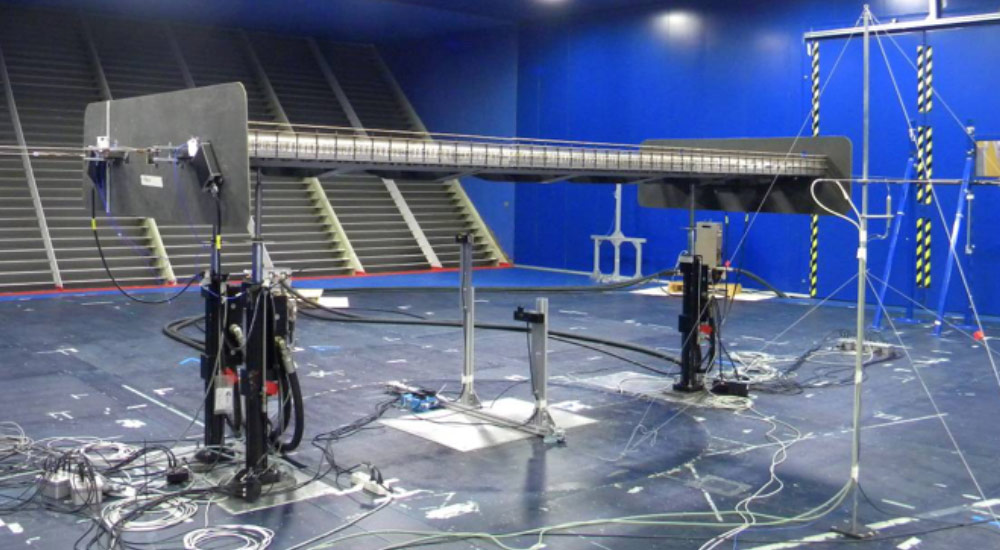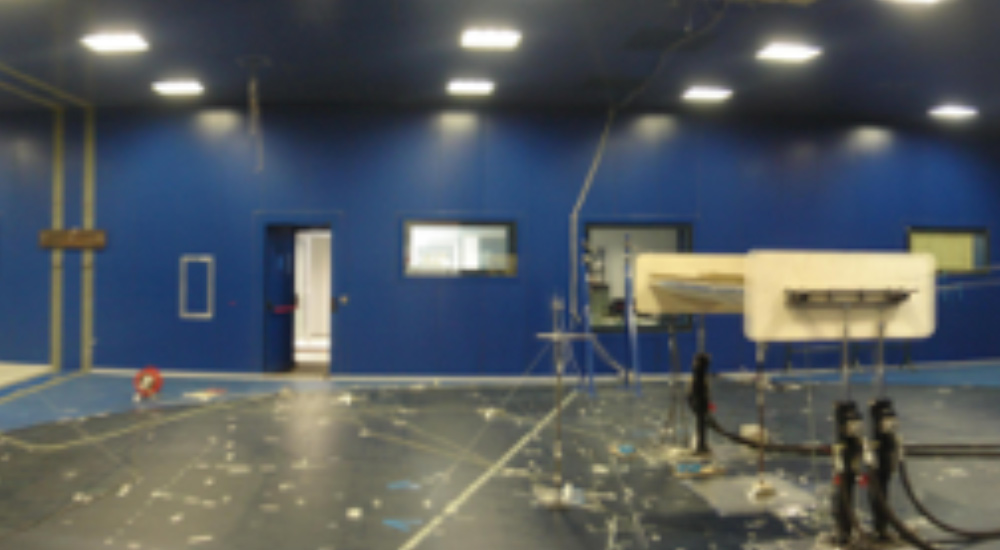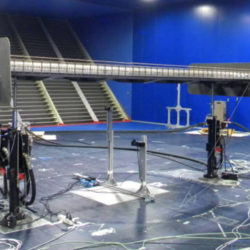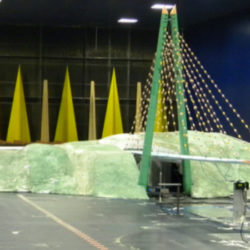Bridge aerodynamics & aeroelasticity
GVPM capabilities offers comprehensive analyses of the wind related problems concerning bridges. Our area of expertise includes topics such as static and dynamic wind loads, wind-induced vibrations, and assessment of aeroelastic stability.
Analyses are carried out both numerically, by means of well validated simulation tools, and by experimental tests in the wind tunnel, using different kinds of models specifically designed for each study.
Several aerodynamic and aeroelastic characteristics can be investigated in the Polimi wind tunnel:
- Steady and unsteady aerodynamic forces (flutter derivatives) using rigid sectional models, by means of imposed-motion tests. Aerodynamic forces are measured either with force balances or by the integration of the surface pressure measured trough high sample-rate pressure scanners
- Vortex-induced vibrations in smooth flow as a function of the structural damping coefficient value (Scruton number), using either rigid sectional models suspended on springs or aeroelastic models of the full structure
- Stability (in smooth flow) and buffeting response (in turbulent flow) using both rigid sectional models suspended on springs or aeroelastic models of the full structure. Turbulence can be generated passively to simulate the characteristics of atmospheric boundary layer, or by means of an active generator to simulate deterministic turbulence.
In case of issues, we can perform the aerodynamic optimization of the section by means of focused actions and specific tailoring.








